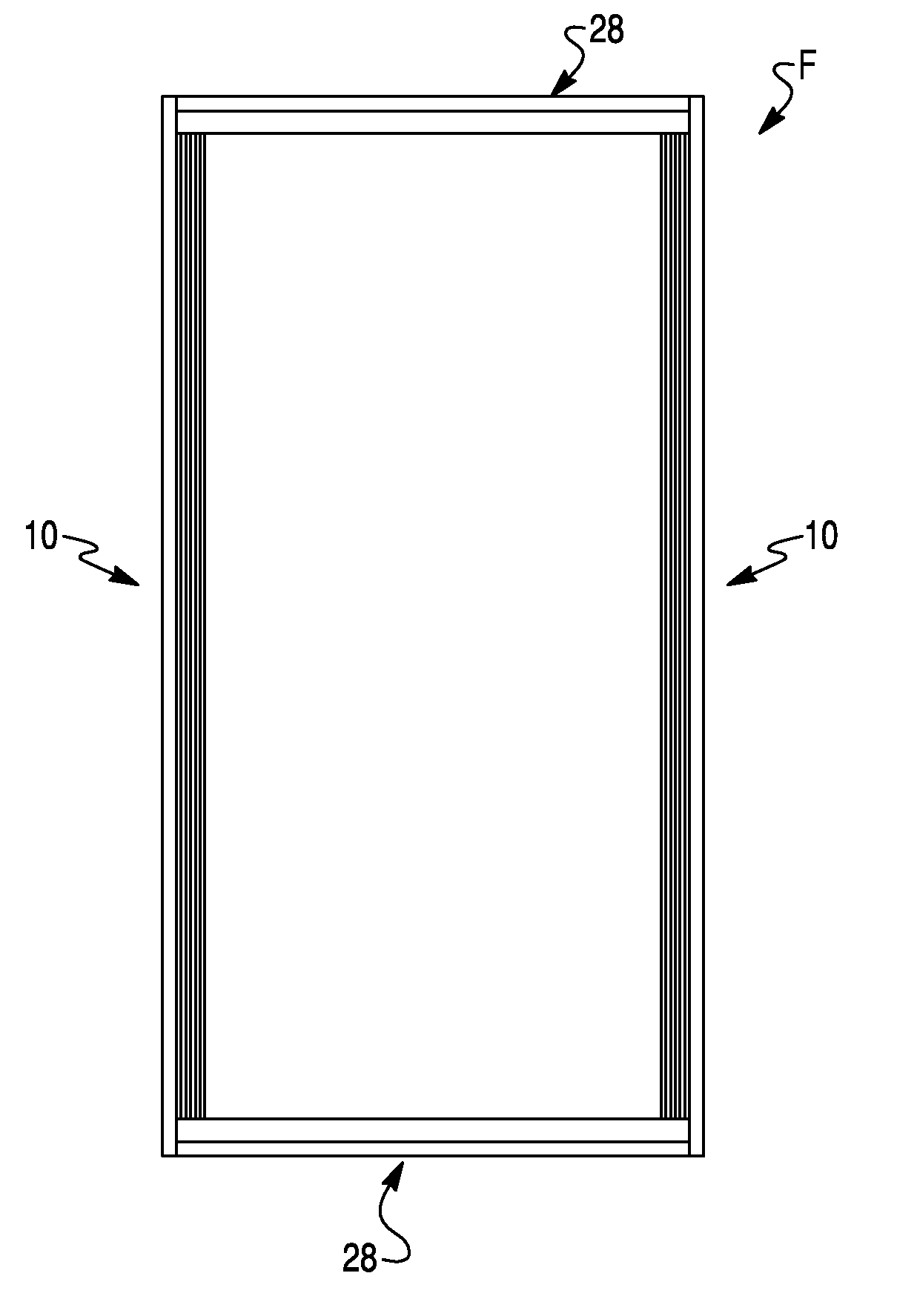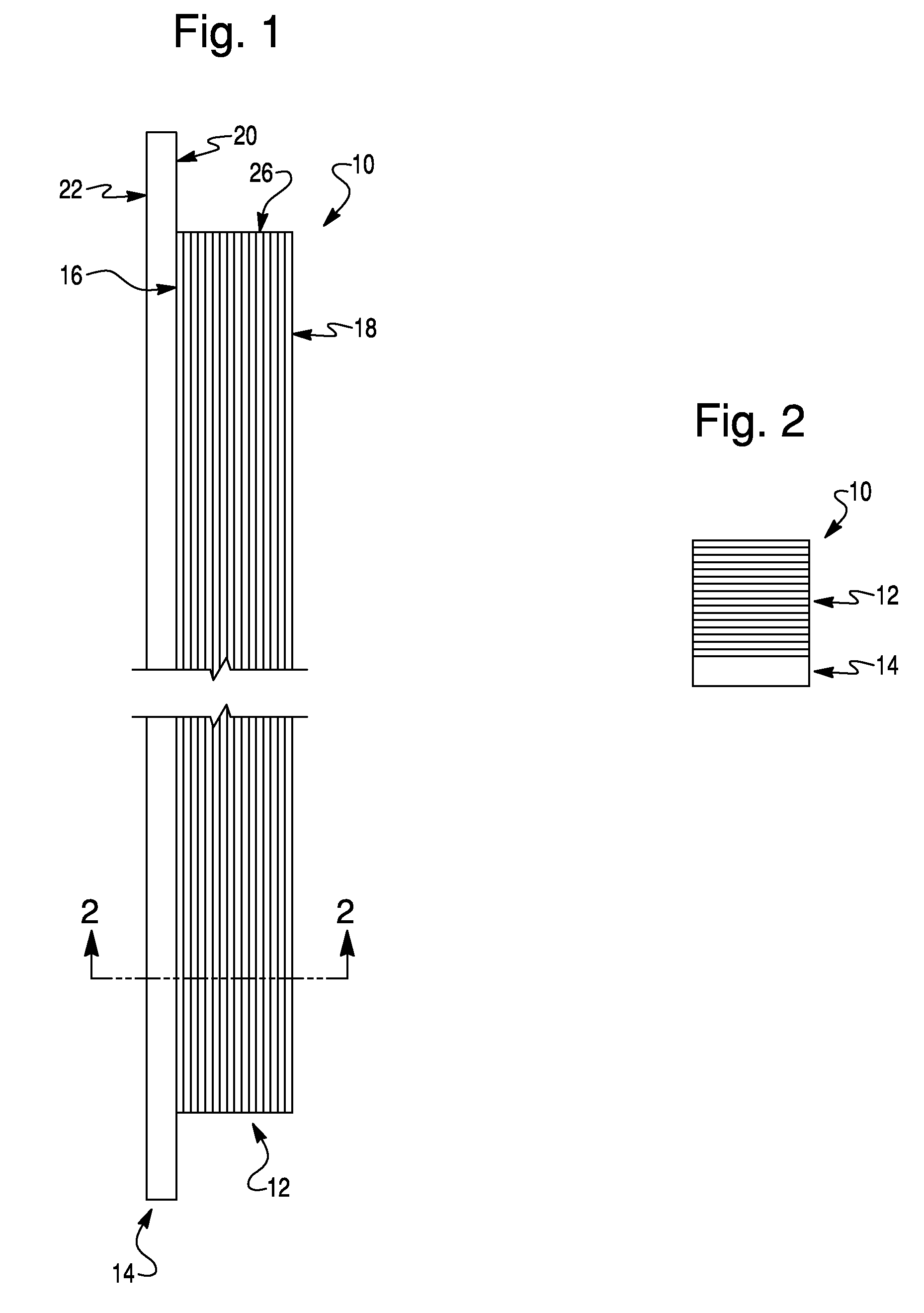Composite capped stile, door and method
a capped stile, composite technology, applied in the field of capped stiles, can solve the problems of prone to rotting, cracking, splitting, and other problems, and achieve the effects of high heat tolerance, strong practicability, and strong resistance to melting
- Summary
- Abstract
- Description
- Claims
- Application Information
AI Technical Summary
Benefits of technology
Problems solved by technology
Method used
Image
Examples
Embodiment Construction
[0024]The present invention is directed to a capped stile or rail for an entry door having an interior backer element and an exterior cap element extending the length of the interior backer element. A capped stile 10 according to an embodiment of the present invention is best shown in FIGS. 1 and 2. Capped stile 10 includes an interior backer element 12, and an exterior cap element 14 secured to interior backer element 12.
[0025]Exterior cap element 14 is formed from a rot resistant composite material, such as a polymer composite. Preferably, exterior cap element 14 is formed from a thermoplastic polymer such as polyvinyl chloride (PVC), preferably lead free PVC. Preferably, the PVC is extruded and simultaneously foamed during extrusion to form either exterior cap element 14, or alternatively a sheet of foamed PVC which is cut to form exterior cap element 14. A foaming agent may be added to the composite material prior to extrusion to enhance foaming. Other suitable polymer composite...
PUM
| Property | Measurement | Unit |
|---|---|---|
| specific gravity | aaaaa | aaaaa |
| specific gravity | aaaaa | aaaaa |
| softening point | aaaaa | aaaaa |
Abstract
Description
Claims
Application Information
 Login to View More
Login to View More - R&D
- Intellectual Property
- Life Sciences
- Materials
- Tech Scout
- Unparalleled Data Quality
- Higher Quality Content
- 60% Fewer Hallucinations
Browse by: Latest US Patents, China's latest patents, Technical Efficacy Thesaurus, Application Domain, Technology Topic, Popular Technical Reports.
© 2025 PatSnap. All rights reserved.Legal|Privacy policy|Modern Slavery Act Transparency Statement|Sitemap|About US| Contact US: help@patsnap.com



